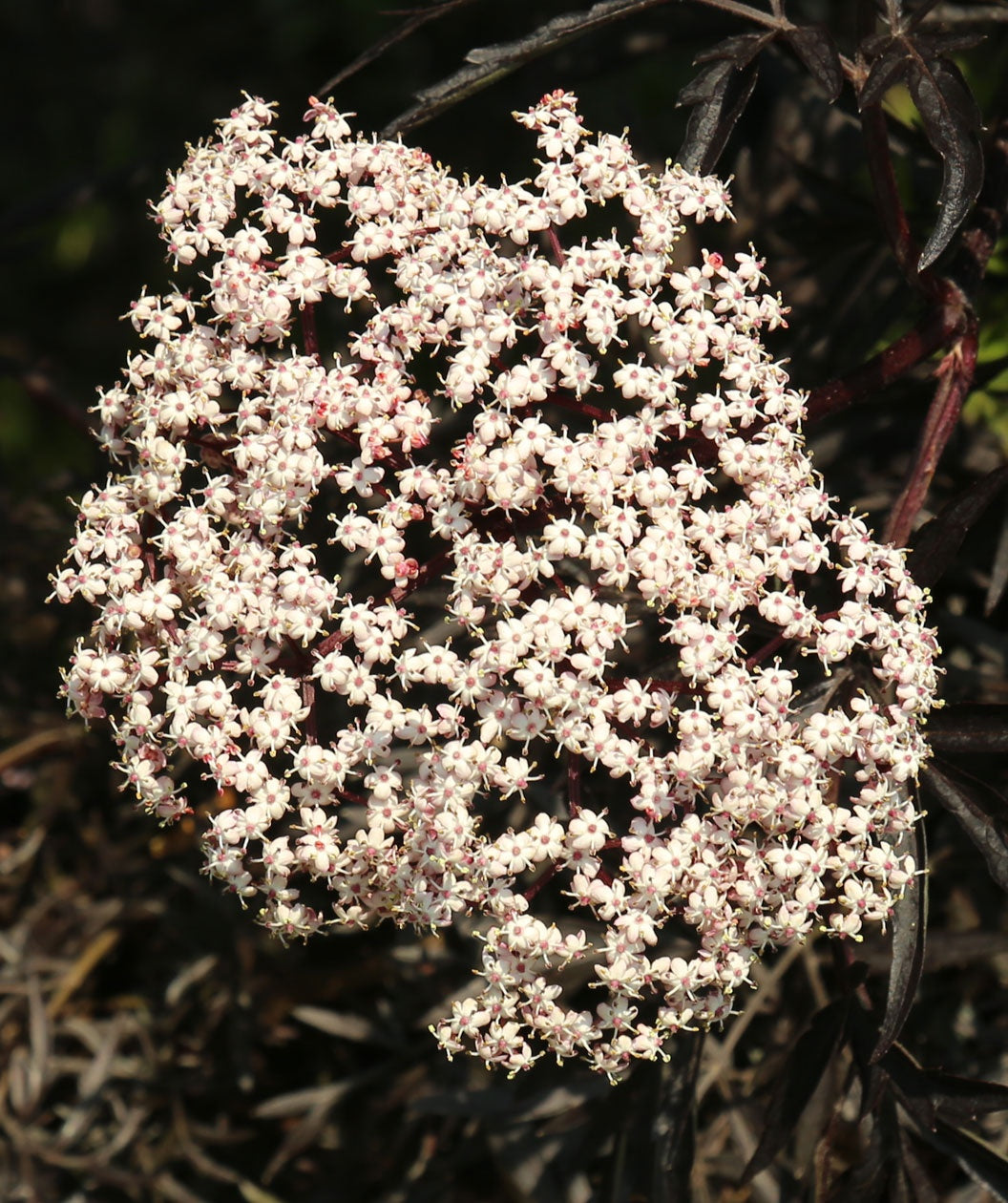DRAMATICALLY DARK FOLIAGE WITH LIGHT PINK BLOOMS
FEATURES:
- Lacy dark foliage of dark leaves emerges in early spring
- In the early summer, lemon scented soft pink blooms bring butterflies
- Glossy purple berries make tasty jams and wine
- Ornamental contrast to evergreen trees and shrubs
- Looks great in cut flower arrangements
- Hand Selected, Fresh from the Grower
- Ships in a plant-safe designed box
Growth Facts
- Hardiness Zone: 4-7
- Mature Height: 6-8' tall
- Mature Width: 6-8' wide
- Exposure: Full Sun/Part Shade
- Spacing: 6-8' apart
DRAMATICALLY DARK FOLIAGE WITH LIGHT PINK BLOOMS
FEATURES:
- Lacy dark foliage of dark leaves emerges in early spring
- In the early summer, lemon scented soft pink blooms bring butterflies
- Glossy purple berries make tasty jams and wine
- Ornamental contrast to evergreen trees and shrubs
- Looks great in cut flower arrangements
- Hand Selected, Fresh from the Grower
- Ships in a plant-safe designed box
Growth Facts
- Hardiness Zone: 4-7
- Mature Height: 6-8' tall
- Mature Width: 6-8' wide
- Exposure: Full Sun/Part Shade
- Spacing: 6-8' apart
Why plant Black Lace® Elderberry?
The Black Lace™ European Elderberry is a cool little ornamental plant with captivating deep purple (nearly black) cut leaf foliage. The shrub bears some resemblance to the red lace leaf types of Japanese Maples, but this uncommon gem is much faster growing than Japanese Maples, and in summer it will also give you the bonus of flat clusters of pretty pink flowers, which jump out from their shadowy background. In late summer, the lovely flowers become small purple-black elderberry fruits that you can turn into jam or wine. Better yet, leave the ripe elderberries for the neighborhood wildlife, and you’ll be entertained by the songbirds that will come to relish this special treat.
This species of Elder is native to Europe, where it has a long history in many cultures there. It figures in several mythological stories and has been associated with both evil witchcraft and magical cures for various ailments, such as the Black Plague. Some people still believe that extract of Elderberry, which can be bought as an herbal supplement, is an effective remedy for colds and other respiratory problems. Black Lace™ Elder, a.k.a. ‘Eva’ Elderberry, arose in England in the late 1990s. It was one of the offspring of a rather involved Elderberry breeding program that began in 1988. It took three generations of carefully orchestrated crosses to get a plant with foliage that was both lacy and nearly black in color, but the result—we think—is quite bewitching!
How to use Black Lace® Elderberry in the landscape?
Black Lace™ Elderberry is an unusual addition to home landscapes, but well worth the placement! It can be used to create unique hedges or screens in your landscape, or as a standalone specimen with gorgeous blooms, foliage and berries!
Planting Zones
Hardiness Zone: 4-7
How To Plant Black Lace® Elderberry
Elderberries are at their best in areas with cool-summer climates, and Black Lace™ is no exception. They are often found in swampy places in the wild, and likewise, Black Lace™ will be right at home in that low-lying spot of your yard that stays soggy, though it will be perfectly happy in ordinary garden soil as well. Full sun will coax out the richest purply-black tones from its leaves. Aphids can be problematic in some years, but ladybugs and other natural predators will usually keep them under control; damaged foliage can be cut back and new growth will emerge. You’ll be happy to know that this species does not send up suckers everywhere like the American Elderberry does.
How To Water
Make sure your Elderberry gets at least one inch of water per week, through a combination of rainfall and irrigation.
How To Fertilize
Feed the Black Lace® twice yearly in the spring as the flower buds form and again after fruit sets with our Elements Starter Plant Food.
How To Prune
Pruning is best done in late winter to early spring.





